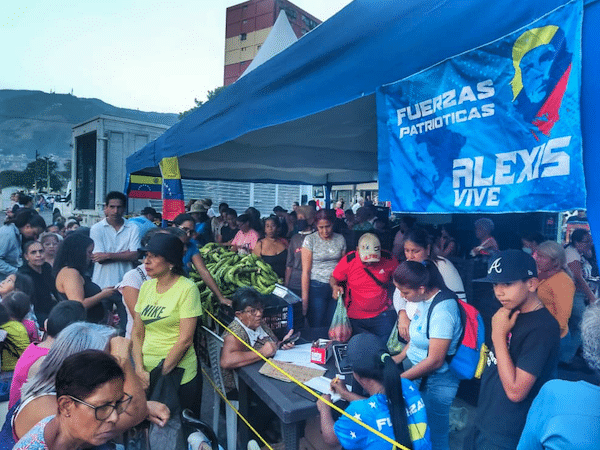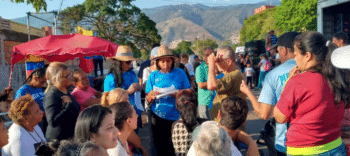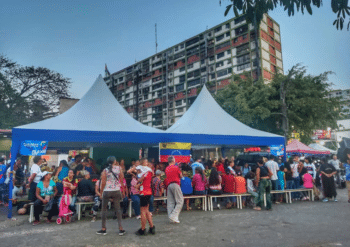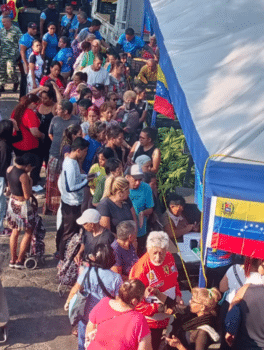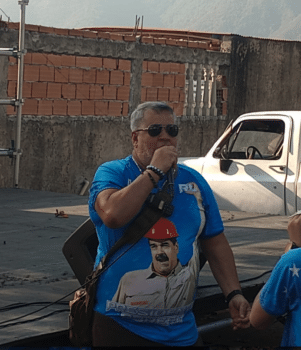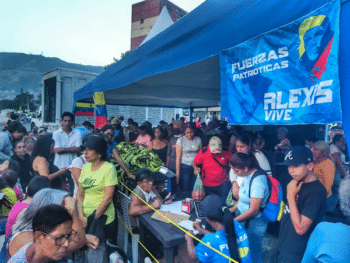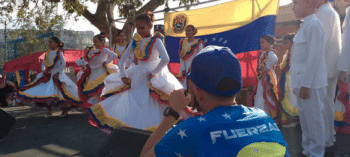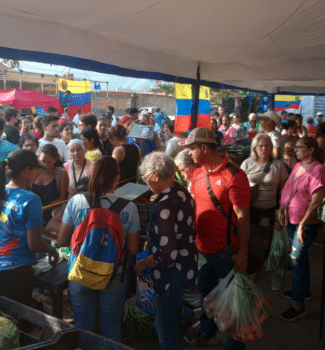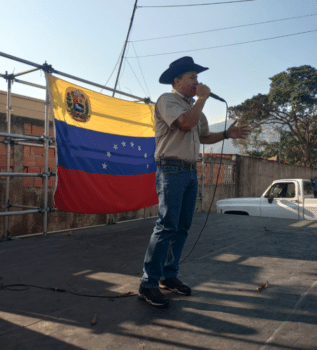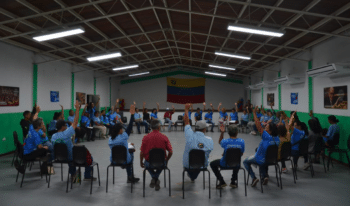A Venezuelan popular movement launched a new initiative to supply food to urban communities at accessible prices.
El Panal Commune, located in the working-class barrio 23 de Enero in western Caracas, organized a produce market over the weekend that bypassed capitalist intermediaries.
According to communard sources, around 1800 families had access to fruits, vegetables and cheese at significantly lower costs than other retailers. A total of 13 tonnes of food supplied directly by campesino families in Valle de Momboy, Trujillo state, western Venezuela, were distributed.
El Panal spokesperson Robert Longa told Venezuelanalysis that the organization is drawing inspiration from Bolívar’s “Admirable Campaign” during the early 19th-century independence struggle, only this time confronting an “economic war” driven by U.S. sanctions.
“It is our challenge to hoist the flags of patriotism and rescue [former President] Chávez’s strategic vision to seduce the people once more,” he said.
We entered Caracas this time with the flags of economic liberation, food supply and planned distribution.
Longa added that the joint initiative with campesinos is part of a long-term strategy to develop communal production.
“This is a first step to break the logic of market intermediaries,” he explained.
Campesinos are also victims of exploitation, that is why it is important to organize, generate class conscience and bring together city and countryside.
In recent years, El Panal Commune has made the community’s food security one of its priorities. Despite its urban setting, communal activists have developed fish-farming and pig-rearing projects alongside agriculture and alliances with other collectives in the countryside. An estimated 13,000 people live in the commune’s territory.

